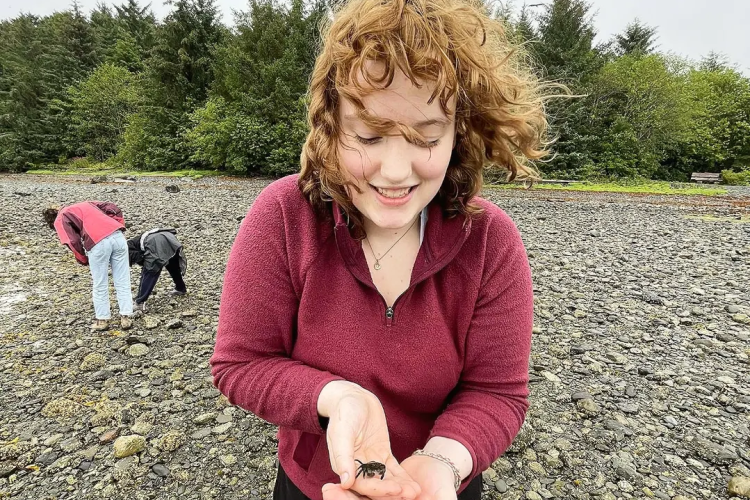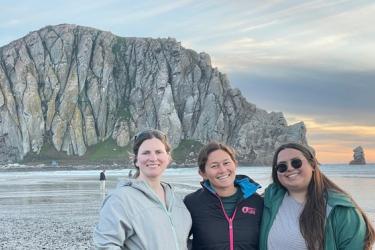When I was 12 years old, I decided that I wanted to be a marine scientist. My 6th grade science teacher introduced me to the idea when she showed me photos from a humpback whale necropsy she had assisted with on one of the islands surrounding my hometown of Sitka, Alaska. This was when I decided two things. First, I wanted to learn everything there is to know about the ocean, and second, I wanted to assist with a whale necropsy.
My name is Virginia Pearson, I am a rising senior at Mt. Edgecumbe High School, and I love whales. Growing up on an island in southeast Alaska, I was surrounded by the ocean. Some of my favorite childhood memories are of sitting on the beach with my friends in the summer with my eyes glued to my binoculars hoping to see humpback whales surface. When I was 8 years old I trained myself to hold my breath for two minutes so I could dive like a sperm whale. Naturally, when I got to high school, I was interested in taking any classes that would teach me more about the ocean. This led me to Seatech.
Seatech is a marine bioacoustics internship that is offered as a class at Mt. Edgecumbe High School and was my introduction to the process of scientific research. The vast majority of interns are upperclassmen, but there have been sophomore interns in years prior. I started Seatech as a junior, working on documenting relationships between human and humpback whale sound occurrences with two other juniors, mentored by Anne Simonis and Morgan Ziegenhorn. Starting in September of 2022, we learned how to scan acoustic data, how hydrophones work, how to read scientific papers, and how to interpret data. As our project progressed, we shifted our focus to creating a conference-style presentation to share at the Seatech Student Research Symposium at the end of the year at Scripps Institution of Oceanography in San Diego, California. Bridging the gap between pure data and clearly communicated information was challenging and we spent a lot of time as a team nit-picking wording and images to best convey what we learned from our project. In my first year of Seatech, I learned so much about bioacoustics and marine science as a field. I learned how scientific research works and was able to participate in a real research project.
The research project that I worked on with Anne, Morgan, and my classmates was centered around the impact of anthropogenic, or human sound on our oceans. Using data from NOAA’s 2018 California Current Ecological Survey (CCES), we documented the occurrence of humpback whale sounds and anthropogenic noise off the California coast. We used a variety of graphs and plots to show where and when there was overlap. Knowing when there is overlap between human and humpback whale activity is important for regulating the fishing industry, setting shipping lanes, and speed limits as aspects of both industries pose threats to the whales they share the ocean with. My hope is that our research will aid the management of shipping and fisheries to better protect California’s humpback whales.
I feel very privileged to have taken Seatech and for the opportunity to work with and learn from some truly amazing scientists. For many interns, including myself, Seatech is an opportunity to actually work on research, instead of exclusively learning about other scientists’ research. Prior to joining Seatech, I had no idea that I would be able to work on meaningful research as a high school student and I am excited to be a second-year Seatech intern in my senior year.



